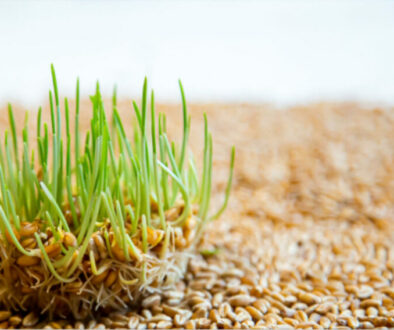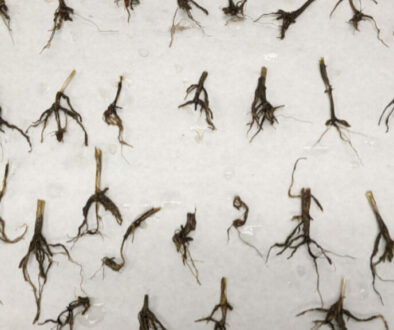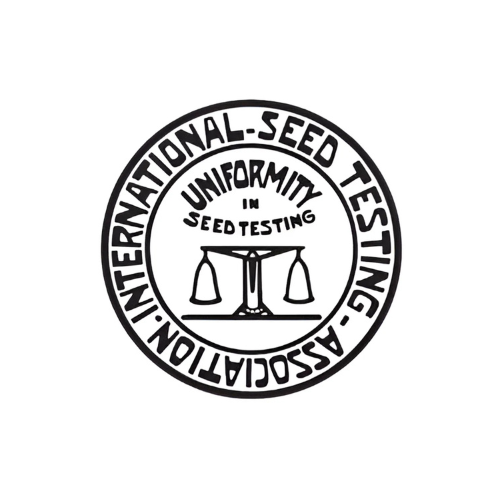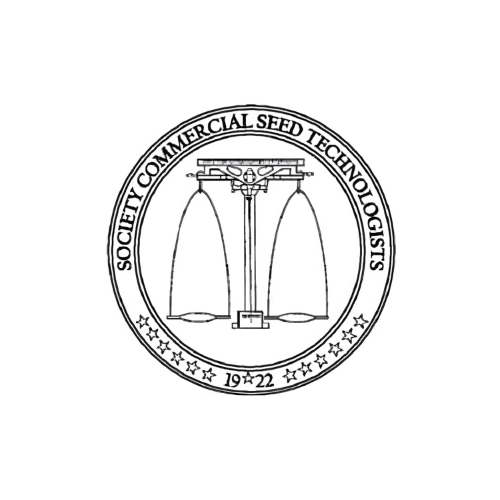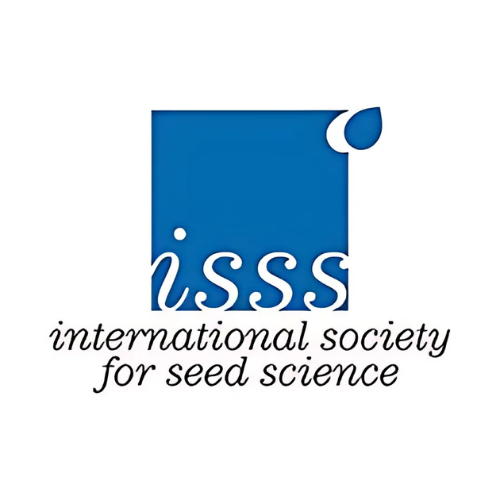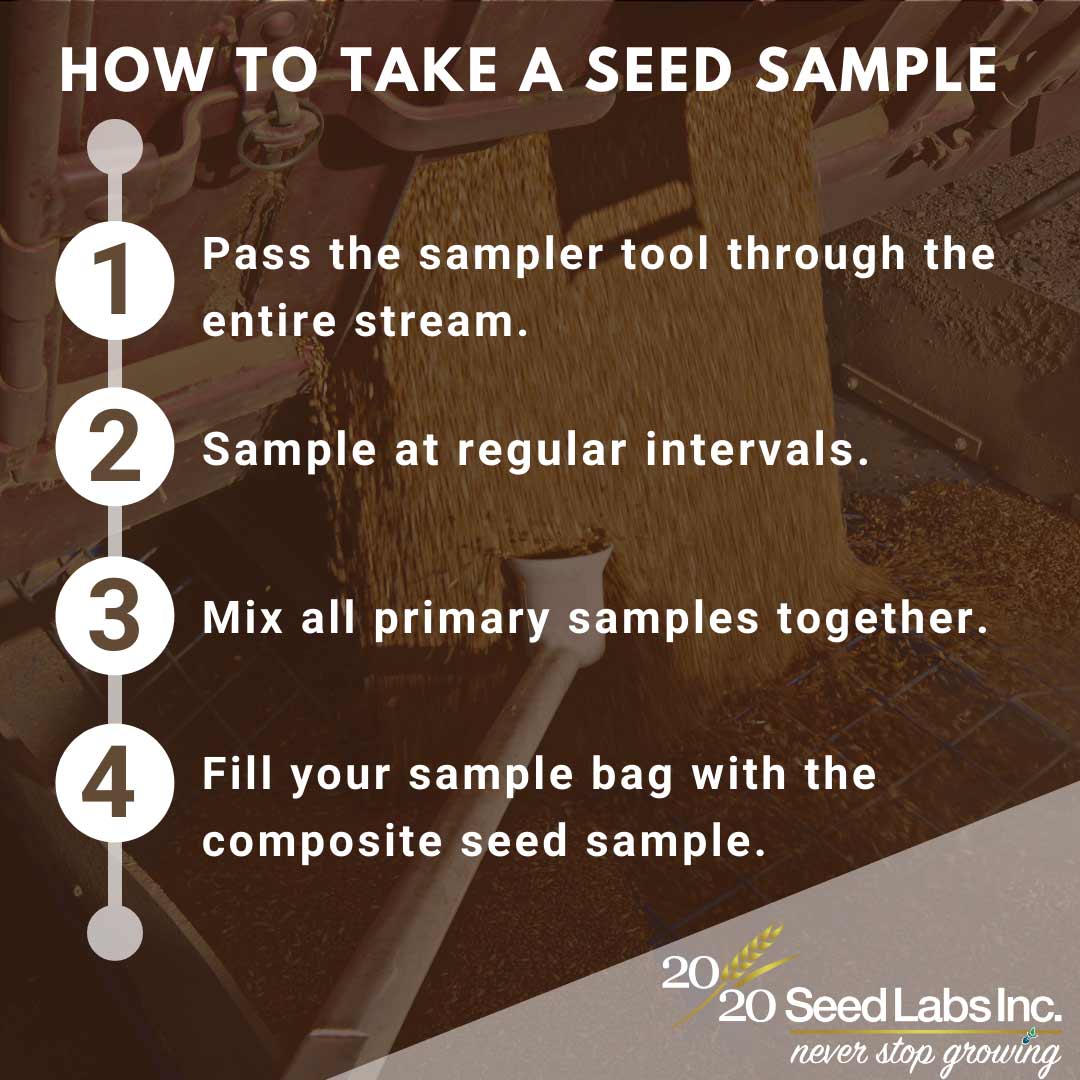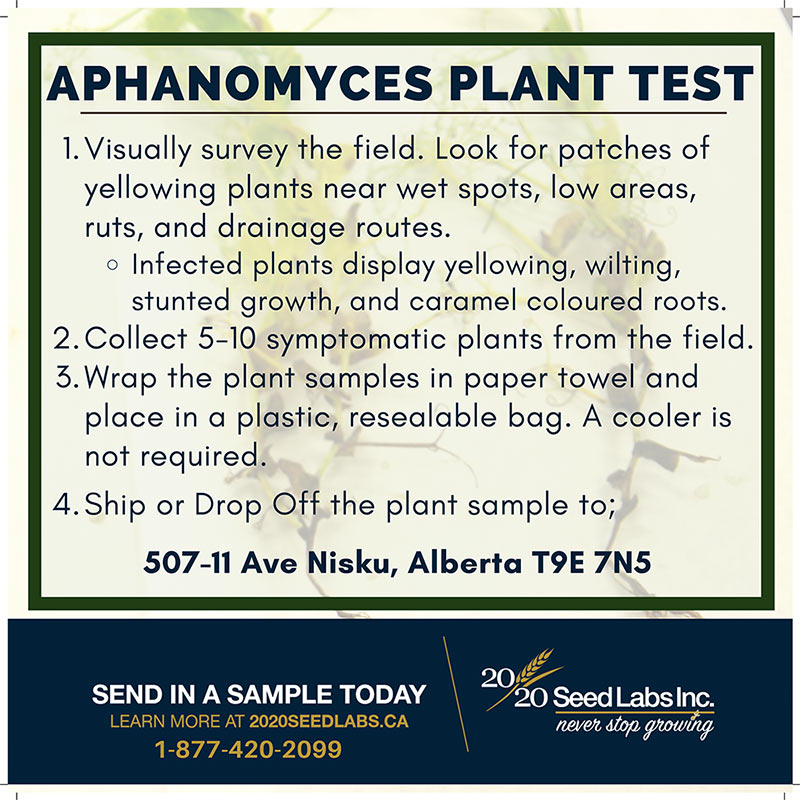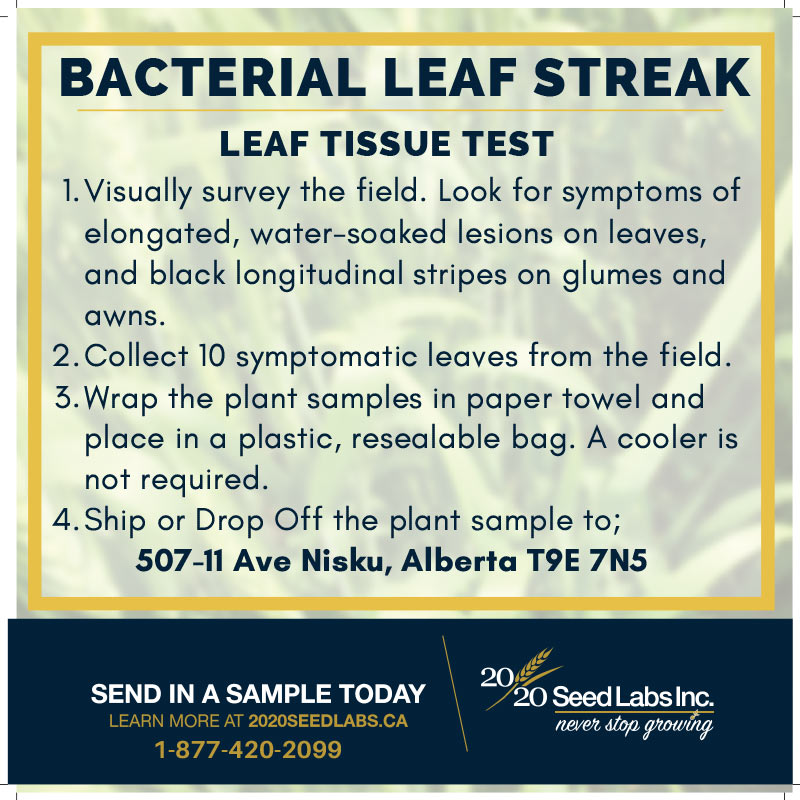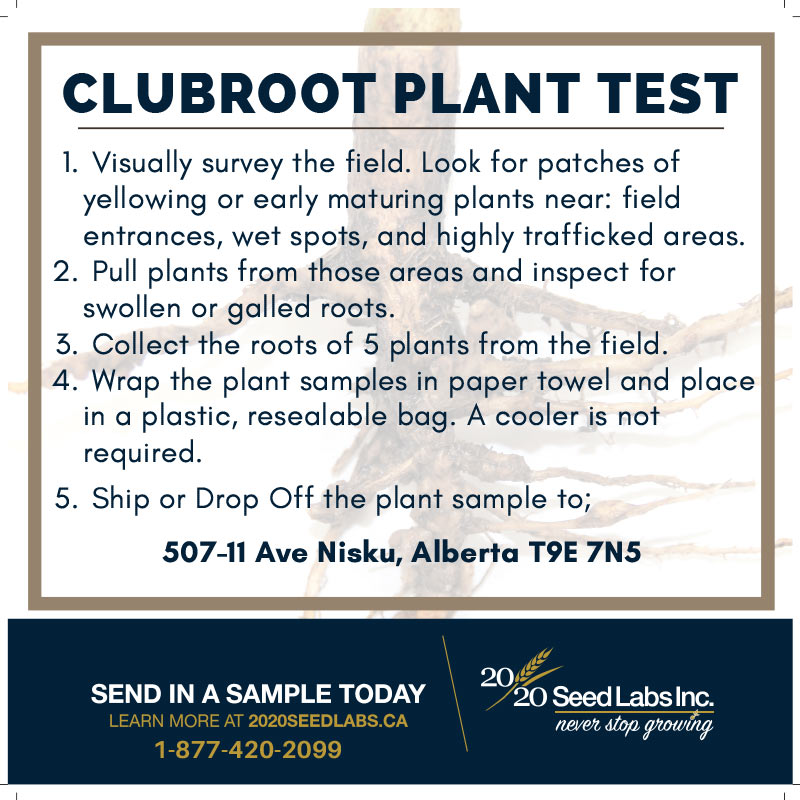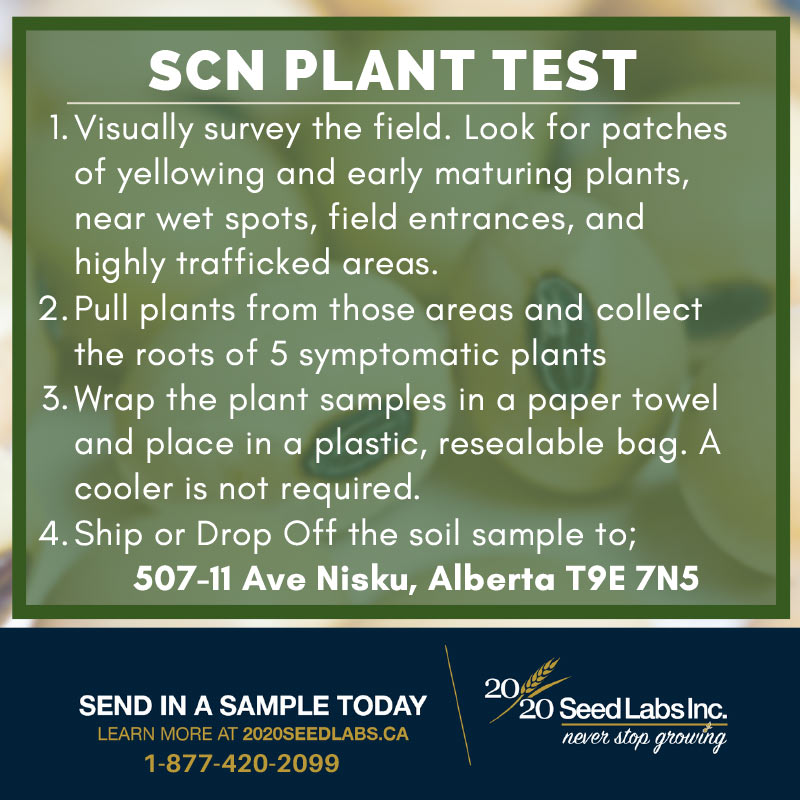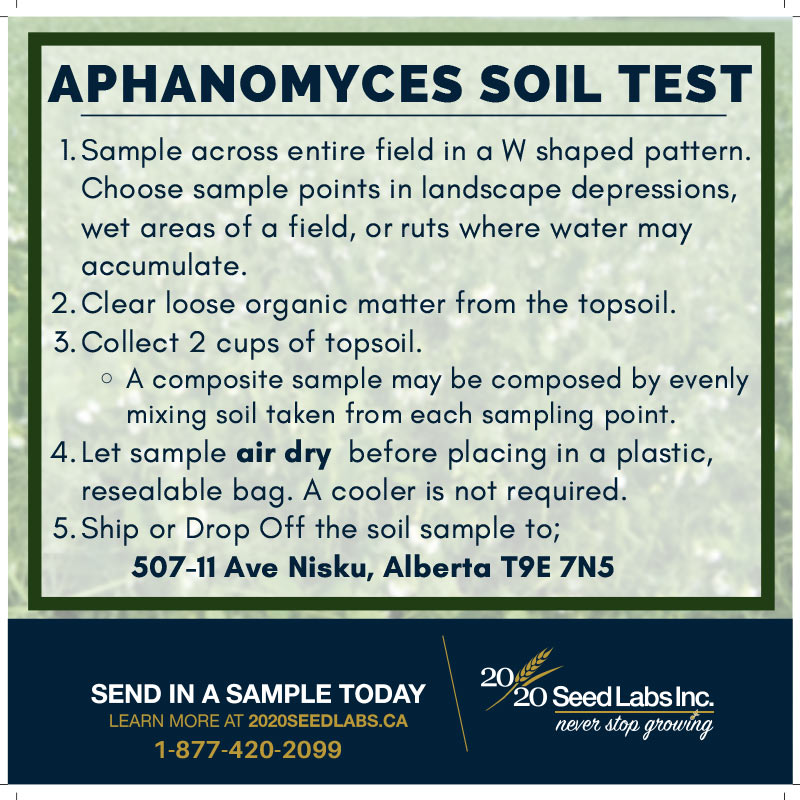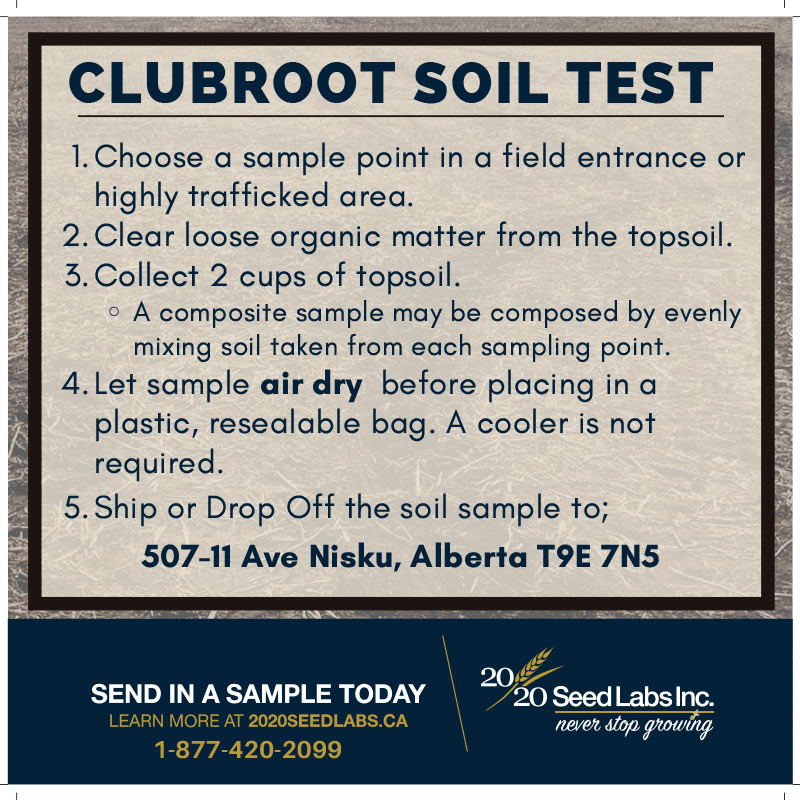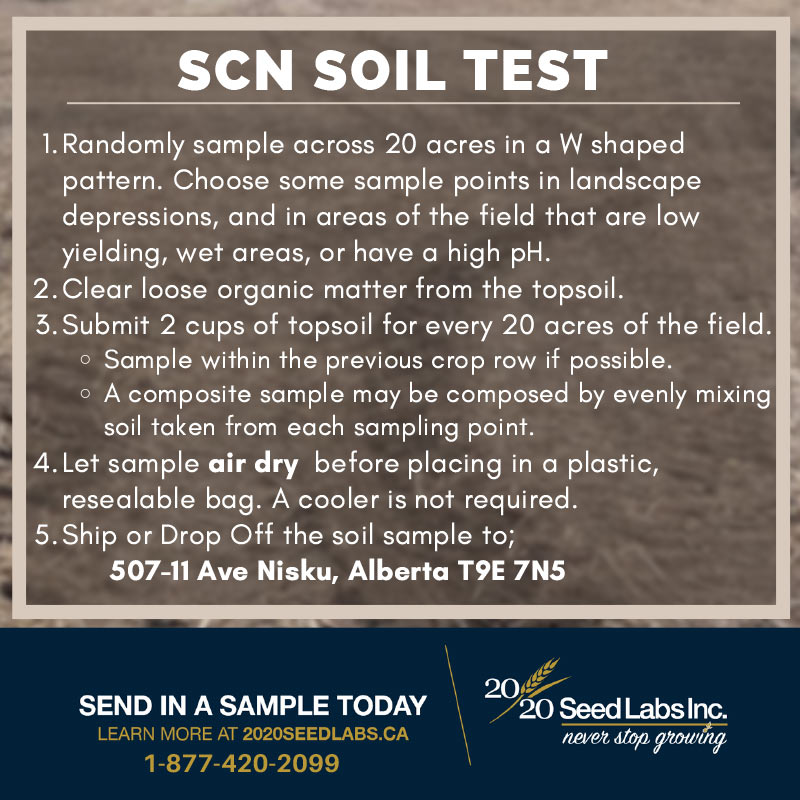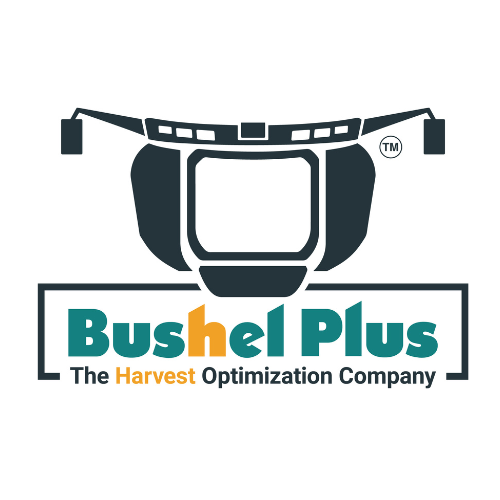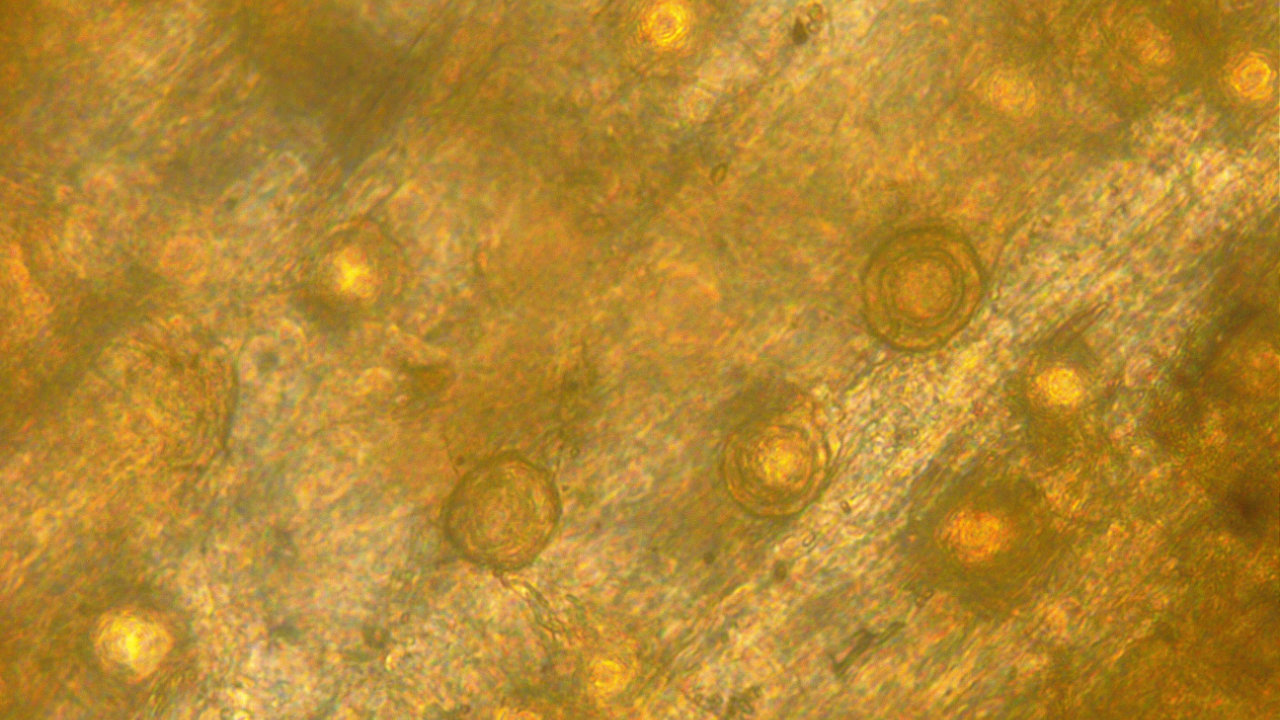
An article from Trevor Blois, Disease Diagnostician on the pathogen – Aphanomyces
Root rot in pulse crops is a major concern for growers. It can be caused by a number of pathogens including Fusarium species, Pythium species, and Rhizoctonia solani. Since 2012, however, a new pathogen has been the biggest root rot concern in western Canada: Aphanomyces euteiches.
Just like any root rot pathogen, infection by Aphanomyces causes damage to roots, interfering with a plants’ ability to uptake nutrients and water, as well as reduce nodulation. This will manifest above-ground as chlorotic, stunted plants, with significantly reduced yields. Infection is particularly favoured by wet and warm conditions.
There are several reasons that Aphanomyces is a different beast from the other root rot pathogens. Aphanomyces is the most destructive disease of peas, especially when other root rot pathogens are present. Infected roots show characteristic caramel colouring that are very soft when compared with healthy roots. These roots produce abundant thick-walled spores, called oospores, which can be easily spread through the movement of soil. Another reason Aphanomyces is a particular concern is that these spores are very long lived, so if Aphanomyces is detected in a field, crop rotations are recommended to be extended up to eight years between hosts to reduce inoculum levels.
When Aphanomyces was first found in Western Canada there were no registered seed treatments. Now Intego Solo, Rancona Trio, and Zeltera Pulse all offer suppression of early season Aphanomyces. Rancona Trio can also be mixed with Belmont or Intego Solo for control of early season Aphanomyces. These seed treatments will only reduce risk of infection early in the season. If disease pressure is very high or conditions are more favourable for infection later in the season seed treatments may offer little protection.
To protect your crop from Aphanomyces there are several steps that you can take:
- Scout and test suspect plants. Any plants suspected of Aphanomyces infection can be sent into the lab to test for which root rot pathogens are present. If Aphanomyces is confirmed, extend the rotation to 6 to 8 years between host crops, peas and lentils. Avoid moving soil from the infected field to other fields that have peas or lentils in them the following year.
- Test soil if you are planning on planting peas or lentils into a field, and if it’s positive choose a non-host crop to seed instead. To test soil, sample in a W-shaped pattern across the field, or focus on low spots, water runs, compacted areas where the pathogen is most likely to be found. Clear all loose organic matter from the soil surface and collect the top 5-10 cm of the A-horizon, or less as the depth allows, without taking any of the B-horizon. Submit a minimum 2 cup sample of soil. Air dry and send in a Ziploc freezer bag.
- Test your seed and only use seed with high levels of germination and vigour, and low levels of seed-borne pathogens. High quality seed will reduce the stressors, ensure better establishment, giving the plants the best chance to fight off an infection if conditions for disease become favourable.
- Apply a seed treatment with Aphanomyces suppression on the label, these will help to prevent early season infections, giving the plants a better start.
Aphanomyces is widespread in the prairies, so if you are a pulse grower you may not be able to avoid it, but by following these precautions you may be able to lessen the impact of this devastating disease.
Schedule a quick chat with Trevor Blois, Disease Diagnostician
https://2020seedlabs.ca/contact-us/
Learn more about 20/20 Seed Labs Inc. Testing Services


